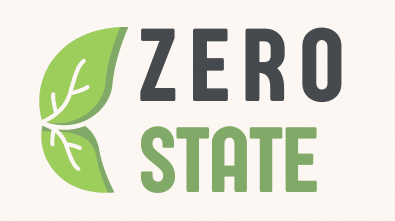The secrets of oven cooking

Cooking with an oven is a culinary art that marries science and technique, subtly balancing heat, time, and ingredients to create delicious meals. The amazing transformations that occur within the confines of this heated box are fascinating, and with some insight, you can harness these processes to elevate your kitchen skills. With the right understanding of how ovens work, you can bake the perfect cake, roast a succulent piece of meat, or even turn out impeccably crispy strips of bacon. This article will delve into the secrets of oven cooking, uncovering the principles of heat, time, and temperature that govern the art of delicious, oven-baked meals.
Understanding How Ovens Work
To master oven cooking, you first need to understand how your oven works. Ovens primarily use two types of heating methods: conventional and convection.
Dans le meme genre : Spanish tapas recipes for a friendly gathering
Conventional ovens are the most common type you will find in homes. They heat food by producing a steady, static heat from elements located at the top and bottom of the oven. This method of cooking produces a hotter temperature at the top of the oven, making it ideal for broiling or roasting.
On the other hand, convection ovens, also known as fan ovens, have a fan and exhaust system that circulates hot air around the food. This method of cooking promotes even heating and faster cooking times. Many professional chefs favor convection ovens for their efficient heat distribution, which is crucial for baking delicate pastries and bread.
A voir aussi : Cooking with exotic spices
The Art of Baking
Baking is a science in itself. A well-baked cake or pastry is a testament to the baker’s understanding of heat, time, and recipe precision. And it all happens in the oven.
One of the crucial factors in baking is the oven’s temperature. Too hot, and your cake might burn on the outside while remaining raw in the middle. Too cold, and your cake won’t rise properly. It’s also essential to preheat your oven to the correct temperature before placing your cake or pastry inside. This prevents the dough from spreading excessively and ensures a well-risen, fluffy final product.
The position of the baking tray in the oven is also crucial. In conventional ovens, the middle rack is often the best place for baking, as it allows for even heat distribution. However, in convection ovens, which circulate hot air, any rack can be used.
Cooking Meat in the Oven
When it comes to cooking meat in the oven, there are a few key factors to consider to ensure you get a moist, tender result. The type of meat, its weight, and the desired level of doneness will all affect the cooking time and temperature required.
To cook a piece of meat properly, it’s essential to use the correct temperature. Higher temperatures will seal the meat’s exterior, trapping the juices inside. This method is perfect for cuts of meat that are meant to be served medium-rare, like steaks. On the other hand, lower temperatures will cook the meat slowly and evenly, allowing the flavors to develop. This method is ideal for tougher cuts of meat like pork shoulder or beef brisket that need to be cooked slowly to break down the tough fibers and become tender.
To ensure the meat is cooked evenly, it’s best to use a meat thermometer. Insert the thermometer into the thickest part of the meat, ensuring it doesn’t touch any bones.
The Perfect Bacon
There’s nothing quite like the aroma of bacon sizzling in the oven. Cooking bacon in the oven is simple, quick, and less messy than frying it on the stovetop. And the end result? Crispy, evenly cooked strips of bacon that are perfect for breakfast or adding to your favorite recipe.
Start with a cold oven. Place your bacon on a baking sheet lined with foil or parchment paper, making sure the strips don’t overlap. Then, place the baking sheet in the oven and set the temperature to 375°F (190°C). Cooking bacon in a cold oven allows the fat to slowly render out as the oven comes up to temperature. This gradual process ensures that your bacon crisps up evenly without burning.
The cooking time will depend on the thickness of your bacon and how crispy you like it. But generally, it should take about 15-20 minutes for thin-cut bacon and 20-25 minutes for thick-cut bacon.
Experimenting With Different Recipes
While understanding your oven and how it interacts with food is an essential part of mastering oven cooking, another crucial aspect is experimenting with different recipes. Once you’ve learned the basics, don’t be afraid to try out new dishes, play around with different flavors, and put your own spin on classic recipes.
Try making a complex, layered lasagna or a simple, rustic apple pie. Experiment with different types of bread, from soft, fluffy dinner rolls to crusty, hearty sourdough. Or, roast a whole chicken with your favorite herbs and spices. The possibilities are endless when you’re cooking with an oven.
Remember, the key to successful oven cooking is understanding how your oven works and how to manipulate heat, time, and temperature to achieve the desired result. So go ahead, preheat your oven, and start exploring the limitless culinary possibilities of oven cooking.
Exploring Other Appliances: Dutch Oven and Air Fryer
Beyond the conventional and convection ovens, other appliances like the dutch oven and air fryer can offer unique advantages in cooking. A dutch oven, for instance, is a large, heavy pot with a tight-fitting lid. It is ideal for slow cooking meat, simmering stews, or baking artisan bread.
The heavy cast iron construction of a dutch oven allows it to retain heat, making it perfect for dishes that need consistent temperatures. Moreover, the lid creates a sealed environment that locks in moisture, enhancing the flavor of the food. If you’re planning to make a beef stew or bake a crusty loaf of bread, a dutch oven is an appliance you should consider.
On the other side of the spectrum is the air fryer. This appliance circulates hot air around food, similar to a convection oven but at a much higher speed. The result is food that is crispy on the outside and tender on the inside, much like deep-fried food but without the oil. Air fryers are great for cooking frozen snacks, roasting vegetables, or even baking small batches of baked goods. The key to mastering an air fryer is understanding that it cooks food faster than a conventional oven, so you’ll need to adjust your cooking times accordingly.
Unraveling the Mystery of Baking Soda
Baking soda is a leavening agent that helps baked goods rise. When mixed with an acidic ingredient like lemon juice, yogurt, or brown sugar, baking soda produces carbon dioxide gas. This gas forms bubbles in the dough, causing it to rise and giving baked goods like cakes, muffins, and bread their light, fluffy texture.
However, baking soda is more than just a leavening agent. It can also enhance browning. When baking soda is heated, it undergoes a reaction that produces carbon dioxide and water. This reaction also generates a small amount of heat, which can help brown the surface of baked goods, making them more appealing and tasty.
Moreover, baking soda can also affect the pH level of your dough. A higher pH (more alkaline) can break down the proteins in flour, making your dough more tender. This can be especially useful when making cookies or biscuits. But remember, baking soda is potent, so use it sparingly to avoid a soapy taste in your baked goods.
Conclusion: Mastering the Art of Oven Cooking
Mastering the art of oven cooking is a culinary journey filled with delicious possibilities. Whether you’re baking a loaf of bread, roasting a juicy chicken, or crisping up strips of bacon in the oven, understanding the principles of heat, time, and temperature will help you unlock the full potential of your oven.
Explore the capabilities of your conventional or convection oven. Don’t be afraid to try other appliances like the dutch oven or air fryer. Remember the power of baking soda in your baked goods and how it can help achieve the perfect texture and browning. From crispy bacon to tender roast meats and fluffy baked goods, your oven can do it all.
So, preheat your oven, grab your favorite ingredients, and let your culinary creativity soar. Whether you’re a novice cook or an experienced chef, the secrets of oven cooking are now in your hands. Happy cooking!
